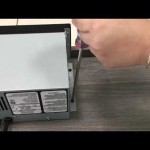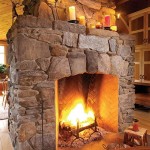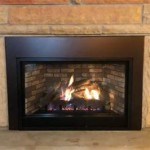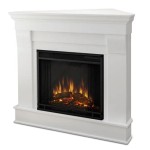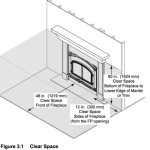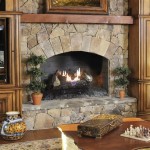Fireplace Mantel Brackets: A Comprehensive Guide
Fireplace mantel brackets are essential structural and decorative elements that support the mantelpiece, the shelf above a fireplace. They serve a dual purpose, providing the necessary load-bearing capacity to hold the mantel and any decorative items placed upon it while also contributing significantly to the overall aesthetic of the fireplace area. Selection and installation of appropriate mantel brackets require careful consideration of factors such as the mantel's weight, desired style, and the wall's construction.
The primary function of a fireplace mantel bracket is to provide stable and secure support for the mantel. Without adequate support, a mantel can sag, crack, or even detach from the wall, posing a safety hazard. The brackets distribute the weight of the mantel and any items placed on it, transferring the load to the wall studs or masonry. This weight distribution is crucial for ensuring the long-term integrity of the fireplace structure.
Beyond their functional role, mantel brackets are integral to the design and style of the fireplace. They are available in a wide variety of materials, shapes, and finishes, allowing homeowners to customize the look of their fireplace to match their personal tastes and the overall décor of the room. From ornate, traditional designs to sleek, modern styles, mantel brackets offer a versatile way to enhance the visual appeal of the fireplace.
Types of Fireplace Mantel Brackets
Mantel brackets can be categorized based on their material, design, and installation method. Understanding these different types is crucial for selecting the right brackets for a specific fireplace and mantel.
Material: Mantel brackets are commonly made from wood, metal, or stone. Wooden brackets offer a traditional and warm aesthetic, often featuring intricate carvings or moldings. Metal brackets, typically made of steel or iron, provide robust support and can be crafted into a variety of designs, from minimalist to ornate. Stone brackets, though less common, offer a classic and durable option, often used in conjunction with stone fireplaces.
Design: The design of mantel brackets can range from simple, understated shapes to elaborate, highly decorative forms. Common designs include corbels, which are projecting brackets with a curved or scrolled shape; shelf brackets, which are typically L-shaped and provide a clean, modern look; and hidden brackets, which are designed to be concealed within the mantel, creating a floating effect. The choice of design depends on the desired aesthetic and the overall style of the fireplace.
Installation Method: Different types of brackets require different installation methods. Some brackets are designed to be surface-mounted, meaning they are attached directly to the wall using screws or bolts. Others are designed to be recessed or embedded into the wall during construction or renovation. Hidden brackets often require specialized mounting hardware and careful installation to ensure proper support.
The selection of the appropriate bracket type depends on the weight of the mantel, the wall material (drywall, brick, stone), the desired aesthetic, and personal preferences.
Factors to Consider When Choosing Mantel Brackets
Selecting the right mantel brackets involves careful consideration of several factors to ensure both functionality and aesthetics. Overlooking any one of these factors can lead to structural problems or a mismatch in style.
Mantel Weight and Dimensions: The weight of the mantel is the most critical factor in determining the size and strength of the brackets. Heavier mantels require stronger, more substantial brackets. The depth of the mantel also influences the bracket selection; deeper mantels may require brackets that extend further from the wall to provide adequate support. It is imperative to consult the mantel manufacturer's specifications for recommended bracket weight capacity.
Wall Material and Construction: The material of the wall to which the brackets will be attached is another essential consideration. Drywall walls require the brackets to be anchored to wall studs for secure support. Brick or stone walls offer more solid anchoring points. It is necessary to use appropriate anchors and fasteners for the specific wall material to ensure a strong and stable connection. Using the incorrect anchors can lead to the bracket pulling away from the wall under the weight of the mantel.
Style and Aesthetic: The style of the mantel brackets should complement the overall design of the fireplace and the room. Consider the architectural style of the house and the existing décor. Traditional homes often benefit from ornate wooden or iron brackets, while modern homes may be better suited to sleek, minimalist metal brackets. The finish of the brackets should also be chosen to coordinate with the mantel and other fireplace elements.
Number of Brackets: The number of brackets required depends on the length and weight of the mantel. As a general rule, a minimum of two brackets is recommended for most mantels. Longer or heavier mantels may require three or more brackets to provide adequate support and prevent sagging. The brackets should be evenly spaced along the length of the mantel to distribute the weight evenly.
Bracket Size and Projection: The size and projection of the brackets should be proportional to the size of the mantel. The brackets should be large enough to provide adequate support but not so large that they overwhelm the mantel or protrude excessively. The projection of the brackets should be sufficient to support the depth of the mantel while leaving enough clearance for decorative items placed on the mantel.
Installation of Fireplace Mantel Brackets
Proper installation of mantel brackets is crucial for ensuring the safety and stability of the mantel. Incorrect installation can lead to structural problems and potential hazards. While professional installation is recommended for complex or heavy mantels, homeowners with basic carpentry skills can often install brackets themselves, provided they follow safety precautions and pay careful attention to detail.
Preparation: Gather all necessary tools and materials before beginning the installation. This includes a level, measuring tape, drill, screwdriver, stud finder (for drywall walls), appropriate anchors and fasteners for the wall material, and safety glasses. Ensure the work area is clear and well-lit.
Locating Wall Studs: For drywall walls, use a stud finder to locate the wall studs behind the drywall. Mark the location of the studs with a pencil. The brackets should be anchored to the studs for maximum support. If studs are not available in the desired bracket location, use heavy-duty drywall anchors designed to support significant weight. Always consult the anchor manufacturer's specifications for weight capacity.
Marking Bracket Positions: Use a level and measuring tape to determine the desired position of the brackets on the wall. Ensure the brackets are evenly spaced and aligned. Mark the screw holes on the wall with a pencil. Double-check all measurements and alignment before drilling any holes.
Drilling Pilot Holes: Drill pilot holes at the marked locations using a drill bit that is slightly smaller than the diameter of the screws or bolts being used. For brick or stone walls, use a masonry drill bit. Pilot holes make it easier to insert the screws and prevent the wood from splitting.
Attaching the Brackets: Attach the brackets to the wall using the appropriate screws or bolts. Ensure the brackets are securely fastened and level. For drywall walls, use screws that are long enough to penetrate the wall studs. For brick or stone walls, use masonry screws or bolts with anchors. Tighten the screws or bolts firmly, but avoid over-tightening, which can damage the wall or the bracket.
Installing the Mantel: Once the brackets are securely attached to the wall, carefully lift the mantel into place and rest it on the brackets. Ensure the mantel is properly aligned and level. If necessary, use shims to adjust the level of the mantel. Secure the mantel to the brackets using screws or adhesive, depending on the design of the mantel and brackets.
Safety Considerations: Wear safety glasses to protect your eyes from debris. Use caution when working with power tools. If you are unsure about any aspect of the installation process, consult a professional. Always follow the manufacturer's instructions for the installation of the brackets and the mantel.
By carefully considering these factors and following these installation guidelines, homeowners can select and install fireplace mantel brackets that provide both functional support and aesthetic appeal, enhancing the beauty and safety of their fireplace area.

Fireplace Mantel Support Sold Individually Decor Rustic Farmhouse Shelf Metal Brackets Industrial

Custom Made Fireplace Mantel Bracket By Dva Metal Ltd Custommade Com

Mantel Shelf Bracket Sold Individually Fireplace Decor Rustic Farmhouse Industrial

Farmhouse Mantel Brackets Fireplace Bracket Metal Supports Rustic Shelving

Rustic Fireplace Mantel Bracket Supports Accessories Mantle Brackets And Rustieke Haarden Betegelde Schouw Scsteenmantel

Outdoor Fireplace Mantel Brackets Man Cave Decor Living Space Garage Storage Pool House She Shed

Fireplace Mantels And Brackets Farmhouse Family Room Other By Vintage Wood Forged Iron Houzz

Fireplace Mantel Bracket Corbel Rustic Farmhouse Decor Shelf Metal Industrial Modern Mantels Brackets

The Original Kudlick Farmhouse Mantle Brackets Industrial Farm Co

Mantel Brackets Rustic Corbels
Related Posts


